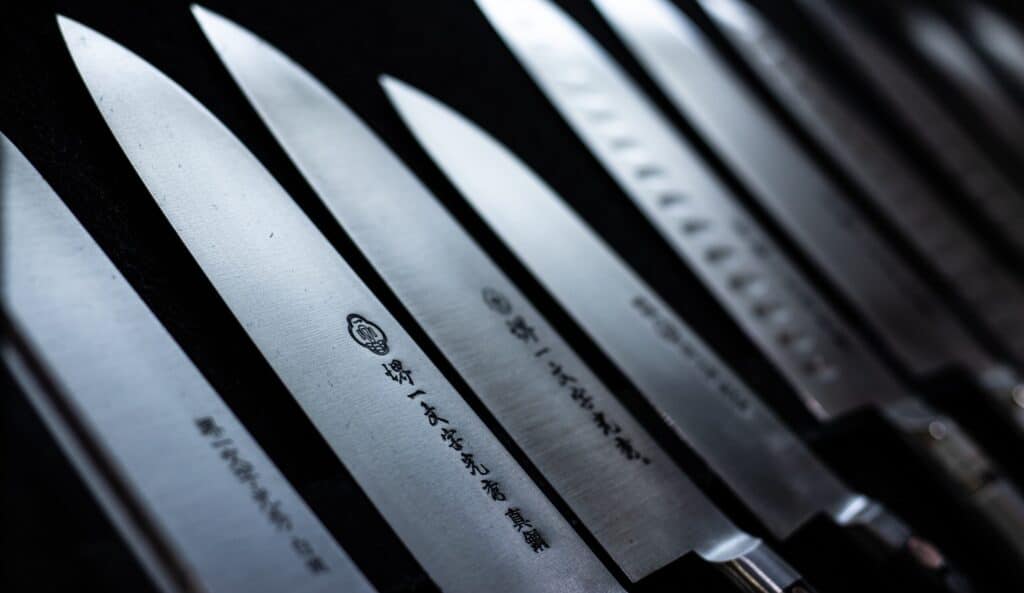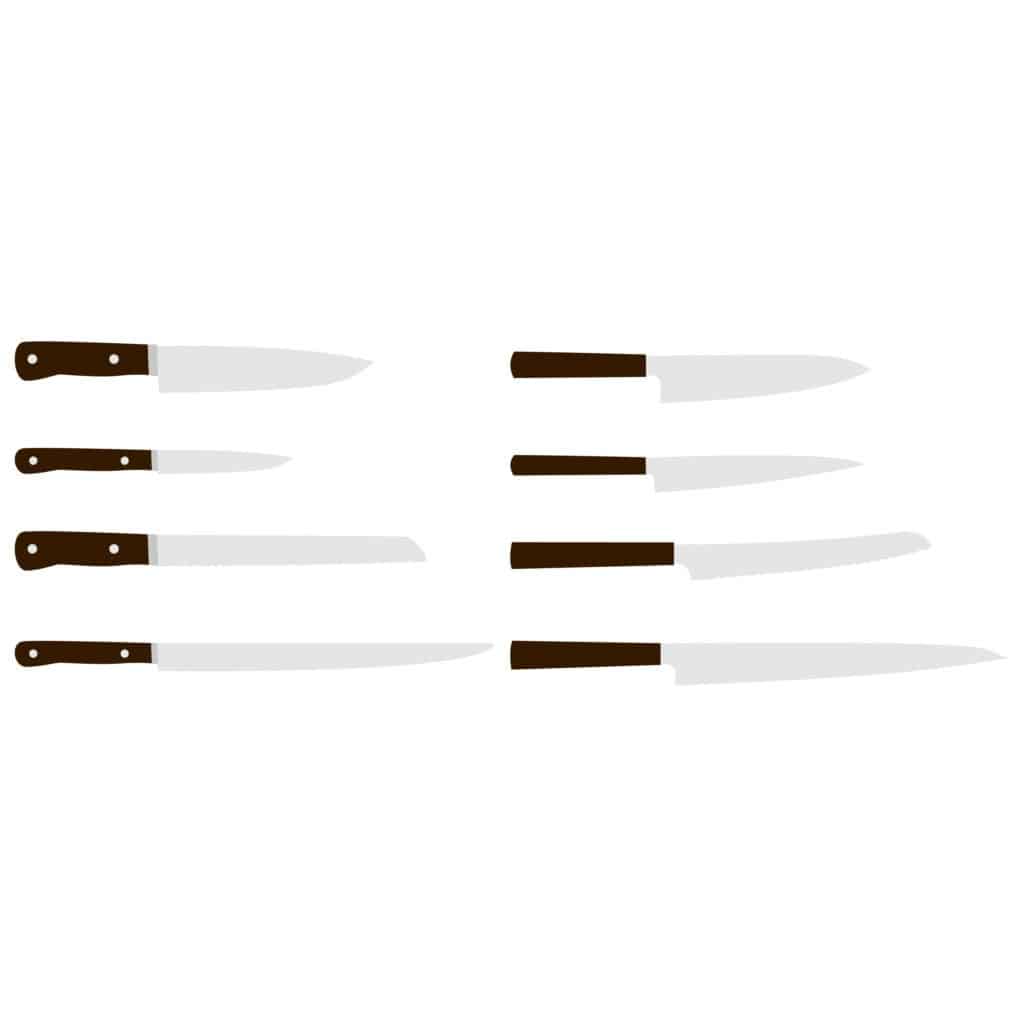
Japanese knives have a great reputation for being some of the very best cooking knives in the world.
But to the newcomer, this world can seem a little daunting. All the new names and shapes can make it hard for cooks who are used to Western-style knives to know what each Japanese knife style is actually for.
In this article, I’m looking at which Japanese knives are the best choice for cutting vegetables.
There are two Japanese knives that I would consider the best for cutting vegetables, which you choose depends on how specific a knife you need. Santoku knives are a good all-rounder, capable of cutting meat, veggies and fish. Nakiri knives are more specialized for cutting vegetables but have limited other uses.
Both of these knives, the Santoku and the Nakiri were designed to mimic the Samurai swords. After World War Two, General Douglas McArthur banned the possession and any production of these swords. The Japanese then shifted their expertise to creating kitchen knives.
History of the Santoku Knife
The Santoku knife was introduced in the 1940’s sometime after World War Two. Before that time, Japanese cooking in the home required a different knife for each individual dish. Foods with different consistencies demand different sharpness of blades.
The Santoku knife allowed them to use one knife for every type of food. This knife became very popular in early 2000 when Rachael Ray introduced it on her show. Being shorter than the Western chef’s knives, it has proven to be more popular with its versatility and ease in the kitchen.
Benefits of a Santoku knife
Today’s Santoku knife has a blade length ranging from three to seven inches. It has a curved spine, a straight edge, a pointy tip and has hollow edges that allow the release of foods that sometimes stick to ordinary knives.
The Santoku is great for cutting vegetables, fruit, meat, fish and cheese and is best used on fragile foods without ripping or tearing.
Different cutting techniques can be used with this knife such as chopping, slicing or chopping with a rocking motion. With the knife, you can mince, dice and slice.
History of the Nakiri knife
The Nakiri knife was created in the 17th century. The Japanese were forbidden to eat any kind of four-legged mammal, therefore, diets consisted of vegetables, rice and fish.
The Japanese used this knife for all types of food but this knife is especially good for chopping vegetables. This knife has recently become popular in the USA.
Benefits of a Nakiri knife
The Nakiri knife has a blade length of five to seven inches and is somewhat weightier than the Santoku, the heaviness allows for ease when chopping vegetables. Both have a double bevel edge.
The Nakiri cuts are very clean, being speedy with slices uniformed and even. The Nakiri is excellent for julienning vegetables or French cutting into thin, long strips
Comparison of the Santoku and Nakiri
Purchasing either knife is a matter of one’s personal preference. The Santoku will cut vegetables but it is better all around, all-purpose knife that can be used on any food item in your kitchen.
The Nakiri knife is better when cutting vegetables. It is more accurate and gives you a clean cut. Prices vary when purchasing either knife depending on the brand.
Santoku in Japanese is santoku bocho meaning, a knife for three uses. If you want a knife that can perform well on meat, fish, or vegetables then the Santoku is your knife.
Nakiri in Japanese is bocho meaning, cutting greens or vegetables. If you want a knife that is primarily for cutting vegetables uniformly and with comfortable ease in movement the Nakiri knife is for you.

